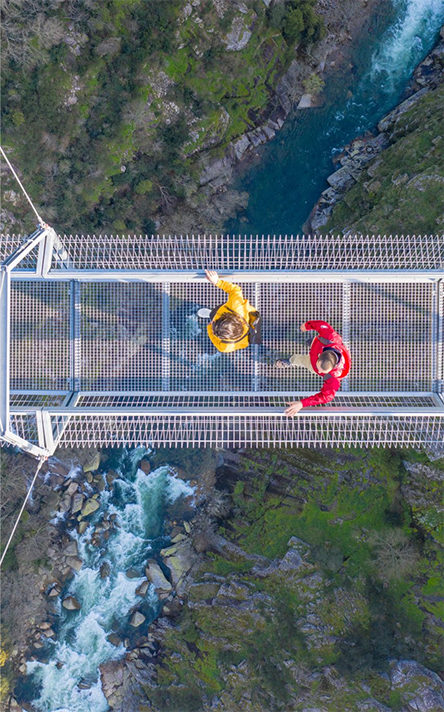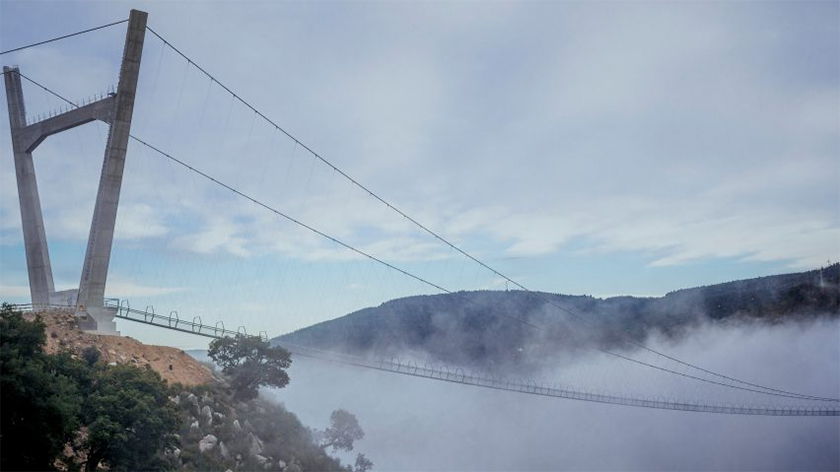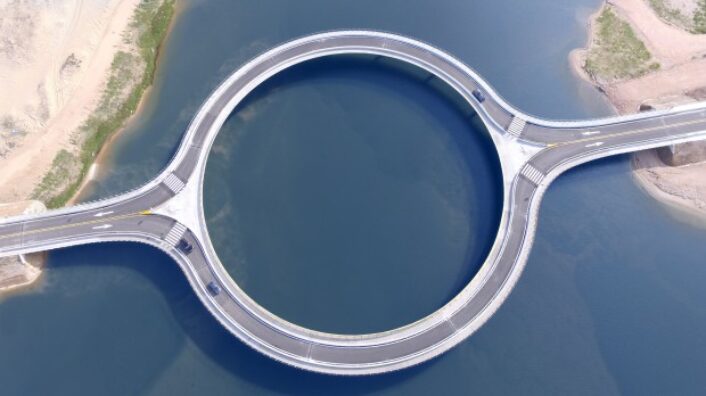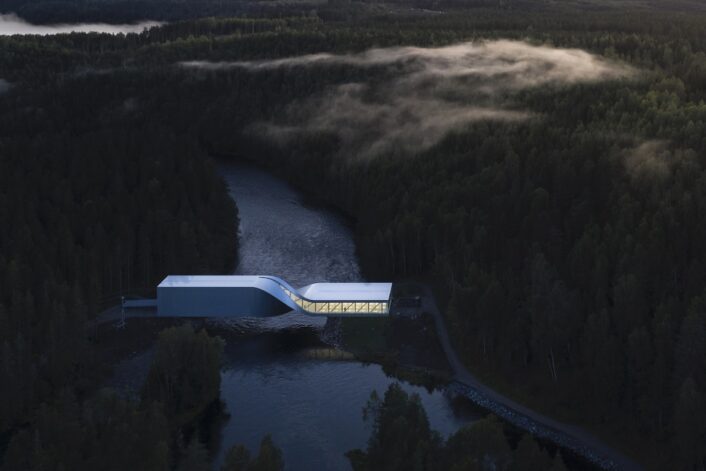A video of the bridge courtesy of: The Guardian
Architecture
NOW OPEN- World’s Longest Suspension Bridge

This new bridge overtakes Switzerland’s Charles Kuonen Suspension Bridge as the longest in the world.
Image courtesy of: Dezeen
Last year, Portugal’s Arouca revealed the world’s longest suspension bridge. Nearly one third of a mile long, the record-breaking suspension bridge is located in the region’s Arouca Geopark, a multi-functional tourist destination featuring both cultural and sporting activities.
The bridge is suspended almost 200 feet above the Paiva river. Linking two hills that have granite cliff faces, this architectural marvel was built by the Institute for Research and Technological Development for Construction, Energy, Environment and Sustainability.

The bridge took two years to complete.
Image courtesy of: Dezeen
This new tourist attraction for the area provides fabulous views across the Pavia Gorge and toward the Aguieiras Waterfall. In addition, it is located near a five mile-long trail that winds through the Arouca hills, near the Paiva Walkways. Margarida Belem, the town’s mayor said, (courtesy of Dezeen), “A remarkable work of national engineering and will certainly be one of the most iconic structures in the municipality of Arouca and in the country and that will surely become a landmark of modernity.”
The bridge’s landing points are constructed into concrete towers that form inverted A-shapes; they also support two steel suspension cables, otherwise known as tensile cables. These pieces support the steel walkway. The cables were fitted to the highest two points of the towers and tied to the walkway decks with vertical cables.
The walkway itself was built as a collection of 127 interlocking metal-gridded decks that work together and function as individual cells. Each deck is connected to the suspension cable at two specific points. Considered a “true suspension bridge,” the bridge features a deck that is supported by cables which are slung from elevated towers… the deck and cables do not follow the same curve.
Aptly called 516 Arouca, signifying the number of meters long- 516, the bridge hopes to revitalize an “aging region” in the northern region of Portugal, about an hour away from Porto. Specifically, Arouca is designated a UNESCO Global Geopark for its unusual geological characteristics. The local rock formations (courtesy of Smithsonian Magazine), “hold clues to the merging of supercontinent Gondwana and other landmasses to create Pangaea around 300n million years ago.” In addition, “The park is also home to Neolithic grass and Roman and medieval ruins, as well as the Monastery of Arouca, which served as a religious center for nuns, and sometimes monks, between the 10th and 19th centuries.”

During its first weekend, only local visitors were allowed to partake in the bridge fun.
Image courtesy of: Dezeen
The architects say that the design was inspired by the Inca bridges that stretched across valleys in the Andes Mountains. Evidence of those was presented in a 2015 Smithsonian Magazine article by Abigail Tucker, she proclaimed that “the Incas probably built at least 200 bodies across gorges and other geographical barriers in the large swath of South America that their empire controlled.”
Not for the faint of heart, the bridge compliments the lengthy series of wooden walkways along the river’s bank. For those five miles, visitors can explore to their hearts’ content… along with enjoying the bridge’s glory. An architectural feat indeed!


